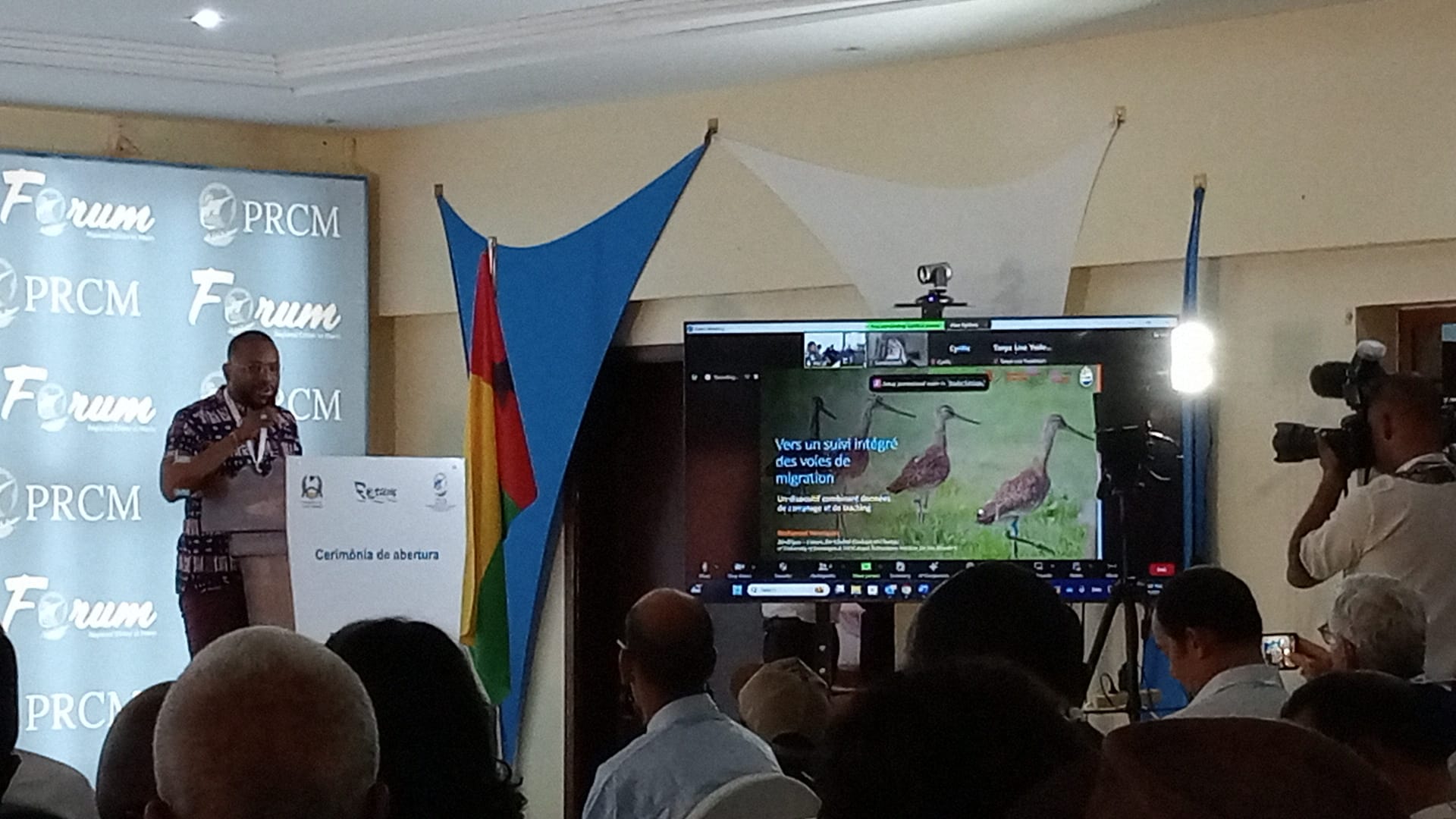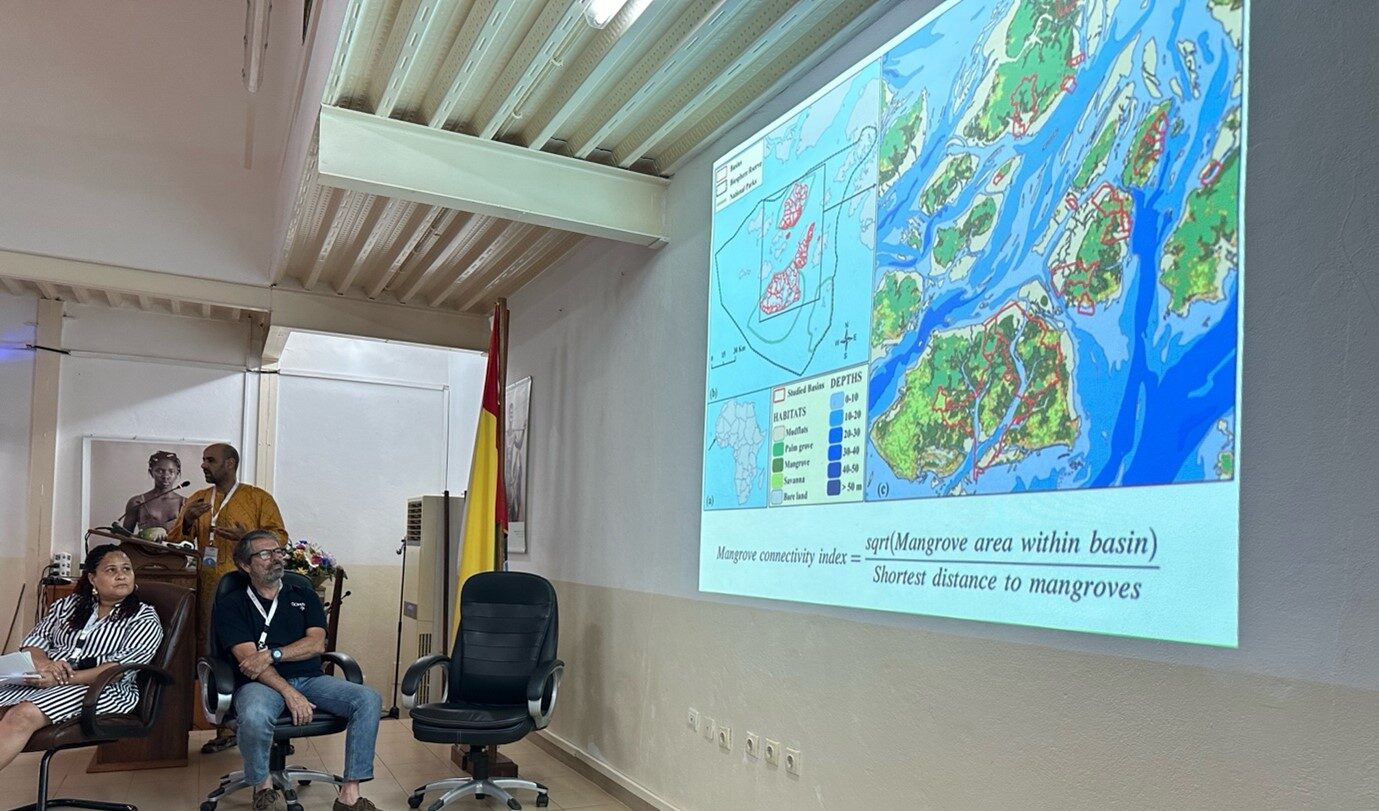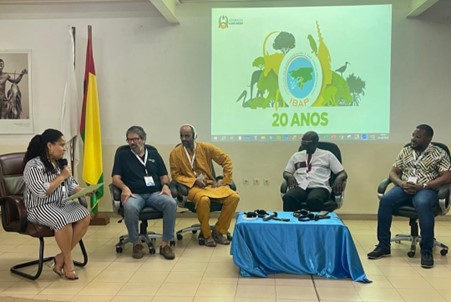by Mohamed Henriques
The Arctic and West Africa might seem worlds apart, but for shorebirds like the bar-tailed godwit and the whimbrel, these distant regions are bound by an invisible thread – migration. Just as these birds trade icy winds for sun-drenched shores, BirdEyes researchers from the University of Groningen embarked on their own journey to Guinea-Bissau, seeking stronger ties with West African conservation efforts.
Their destination was the 11th edition of the Regional Coastal and Marine Forum (FOMACO2024). Organized for the first time in Bissau by the PRCM, this vibrant conference buzzed with energy. BirdEyes post-doctoral researchers, Hacen Mohamed El Hacen and Mohamed Romero Henriques, were an integral part of the conversation. They showcased the program’s vital research through four presentations (including the opening keynote!), side events, and technical workshops.
Mohamed’s opening keynote, “Towards an Integrated (Waterbird) Flyway Monitoring: A Framework Combining Count and Tracking Data,” honored his Guinea-Bissau origins and set a collaborative tone for the event. Hacen delved into the fascinating world of the Bijagós Archipelago, revealing insights from the University of Groningen’s study on “Mangrove-mudflat connectivity shaping benthic communities” (read the paper here).


Mohamed’s talk, “Where Mangroves Meet the Sky: Shorebirds as Guides to Mangrove-Intertidal Linkages in the Bijagós Archipelago Biosphere Reserve,” drew connections between mangroves and migrating birds. With the help of satellite tracking data (analyzed by João Belo, a PhD student from the University of Acveiro and member of the Global Flyway Network), he showed how mangroves become vital refuges for shorebirds during high tide. The duo’s final talk, presented at a special side event, showcased ongoing research from research groups included in the West Africa-wide MAVA-funded program (PAZHOC).
FOMACO2024 was a resounding success, and a great venue for BirdEyes. The 400 delegates from 32 countries, representing mostly West Africa but also partners from around the globe, brought a wealth of knowledge and passion to Bissau. Our researchers returned not just with memories, but with the seeds of powerful new collaborations that will strengthen conservation efforts along the East Atlantic Flyway.




